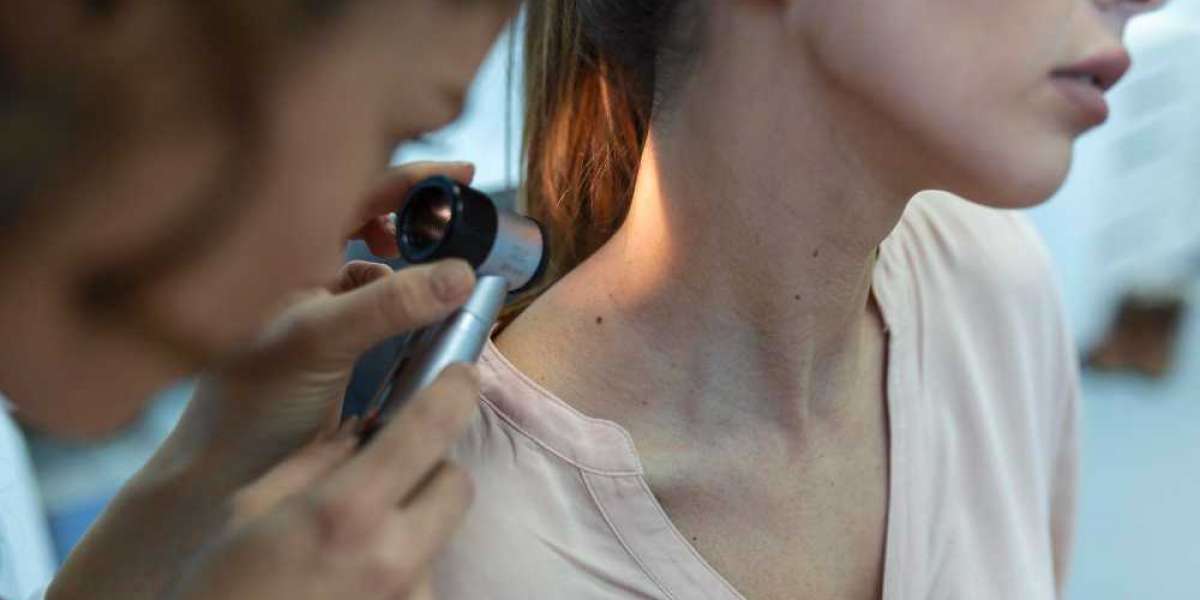Microdermal implants, also known as dermal anchors or single-point piercings, are a unique form of body modification that involves embedding a small anchor beneath the skin, with only a decorative top visible on the surface. Unlike traditional piercings, which have an entry and exit point, microdermal implants are secured under the skin, making them a type of subdermal implant. While they offer a stylish and modern aesthetic, they require careful aftercare and patience to heal properly. Understanding the healing process can help you take the necessary steps to prevent complications and ensure long-term success.
Understanding the Healing Process
The healing of a microdermal implant involves several stages, each requiring careful attention to hygiene and aftercare. The implant needs time to integrate with the surrounding tissue, and any disruption during this process can lead to irritation, rejection, or infection.
Initial Healing Stage (First Two Weeks)
The first two weeks after getting a microdermal implant are the most critical. Immediately after the procedure, you can expect some swelling, redness, and mild discomfort around the piercing site. This reaction is normal as your body identifies the implant as a foreign object and begins the healing process. You may also experience slight bruising and a clear or slightly yellowish discharge, which is a natural part of wound healing.
During this stage, it is essential to keep the area clean and avoid unnecessary contact with the jewelry. Touching or twisting the implant can introduce bacteria and prolong healing. Cleaning the area twice daily with saline solution or an antiseptic recommended by your piercer will help prevent infection. It’s also important to avoid submerging the implant in water, such as in pools, hot tubs, or baths, as bacteria can enter the wound and cause complications. Additionally, wearing loose clothing around the implant site will help reduce friction and irritation.
Intermediate Healing Stage (Weeks 3 to 6)
By the third week, the initial swelling and redness should begin to subside. The body will start forming a protective layer of scar tissue around the anchor, helping to secure it in place. At this stage, the implant may feel more stable, but the healing process is still ongoing.
During this time, you should continue your cleaning routine and avoid putting pressure on the implant. Sleeping directly on the piercing can cause irritation and may lead to migration or rejection of the implant. It’s also crucial to refrain from changing the jewelry top too soon, as the implant is still settling. Be mindful of signs of irritation, such as small bumps around the implant. These bumps can develop due to friction, poor aftercare, or excessive movement. Applying warm saline compresses can help soothe irritation and promote healing.
One of the most common concerns during this phase is rejection. In some cases, the body may attempt to push the implant out, treating it as an unwanted foreign object. This can happen if the implant is placed in an area with high movement, such as the hands or wrists, or if the skin around the implant becomes too thin. If you notice the implant appearing closer to the surface of the skin, consult your piercer for advice on how to proceed.
Final Healing Stage (Months 2 to 6)
By the second or third month, the microdermal implant should feel secure, and any tenderness should subside. However, full healing can take anywhere from two to six months, depending on individual factors such as skin type, lifestyle, and aftercare. Once fully healed, you may be able to change the jewelry top, but it’s best to have this done by a professional to avoid disrupting the implant.
Even after healing is complete, long-term care is essential to prevent complications. Cleaning the area regularly, avoiding unnecessary trauma, and checking for signs of irritation will help ensure that your subdermal implant remains in good condition. Though healed implants require less maintenance, they can still be susceptible to rejection if exposed to repeated trauma.
Factors That Affect Healing Time
Several factors can influence how quickly and smoothly your microdermal implants heals. The location of the implant plays a significant role; areas with more movement or friction, such as the hands or wrists, are more prone to irritation and longer healing times. On the other hand, flatter areas like the collarbone may heal more predictably.
Individual healing abilities also vary from person to person. Factors such as overall health, immune system strength, and skin type can impact healing. Some people naturally heal faster than others, while those with sensitive or reactive skin may experience prolonged healing times.
Aftercare is another crucial factor. A strict cleaning routine, avoiding unnecessary movement, and protecting the implant from potential trauma can significantly improve healing outcomes. Additionally, lifestyle choices such as physical activity, exposure to dirt or bacteria, and even diet can influence the body's ability to heal efficiently.
The type of jewelry used in the implant also affects healing. High-quality implant-grade titanium or surgical steel is recommended, as these materials are less likely to cause allergic reactions or irritation. Avoid jewelry made from nickel or lower-quality metals, as they can trigger adverse skin reactions and slow the healing process.
Common Complications and How to Handle Them
Although most microdermal implants heal without major issues, complications can occur if proper aftercare is not followed. One of the most common problems is infection, which can cause increased redness, swelling, warmth, and pus formation. If you notice these symptoms, it’s important to clean the area with saline solution and seek medical advice if the condition does not improve.
Another potential issue is rejection, where the body attempts to push the implant out. If the implant begins migrating toward the surface of the skin or the surrounding area becomes too thin, removal may be necessary to prevent scarring. Rejection is more likely in areas with high movement or if the implant is not placed deep enough.
Irritation bumps are another common concern, often caused by excessive movement, friction, or improper cleaning. If you develop small raised bumps around the implant, applying warm saline compresses and avoiding unnecessary movement can help reduce inflammation. Keeping the area free from irritants, such as makeup or harsh skincare products, can also prevent further irritation.
Long-Term Care and Maintenance
Once fully healed, microdermal implants require minimal maintenance, but regular care will help ensure their longevity. Cleaning the area gently while showering and avoiding excessive pulling or twisting of the jewelry will help prevent irritation. Snagging the implant on clothing, towels, or hairbrushes can cause trauma, so it’s important to be mindful of daily activities.
Checking for changes in the implant, such as movement, redness, or discomfort, is also recommended. If any issues arise, consulting a professional piercer can help address them before they become serious. If you ever decide to remove your subdermal implant, it should be done by a professional to minimize scarring and ensure proper healing.
Final Thoughts
The healing process of microdermal implants requires patience and careful attention to aftercare. While the implant may appear stable within a few weeks, full healing can take several months. By following proper cleaning routines, avoiding unnecessary trauma, and monitoring for signs of rejection or infection, you can ensure a smooth healing process and enjoy your subdermal implant for years to come. If you experience any complications, seeking professional guidance is always the best course of action. Whether you’re new to body modifications or an experienced enthusiast, understanding what to expect during healing will help you make the most of your unique and stylish microdermal piercing.






